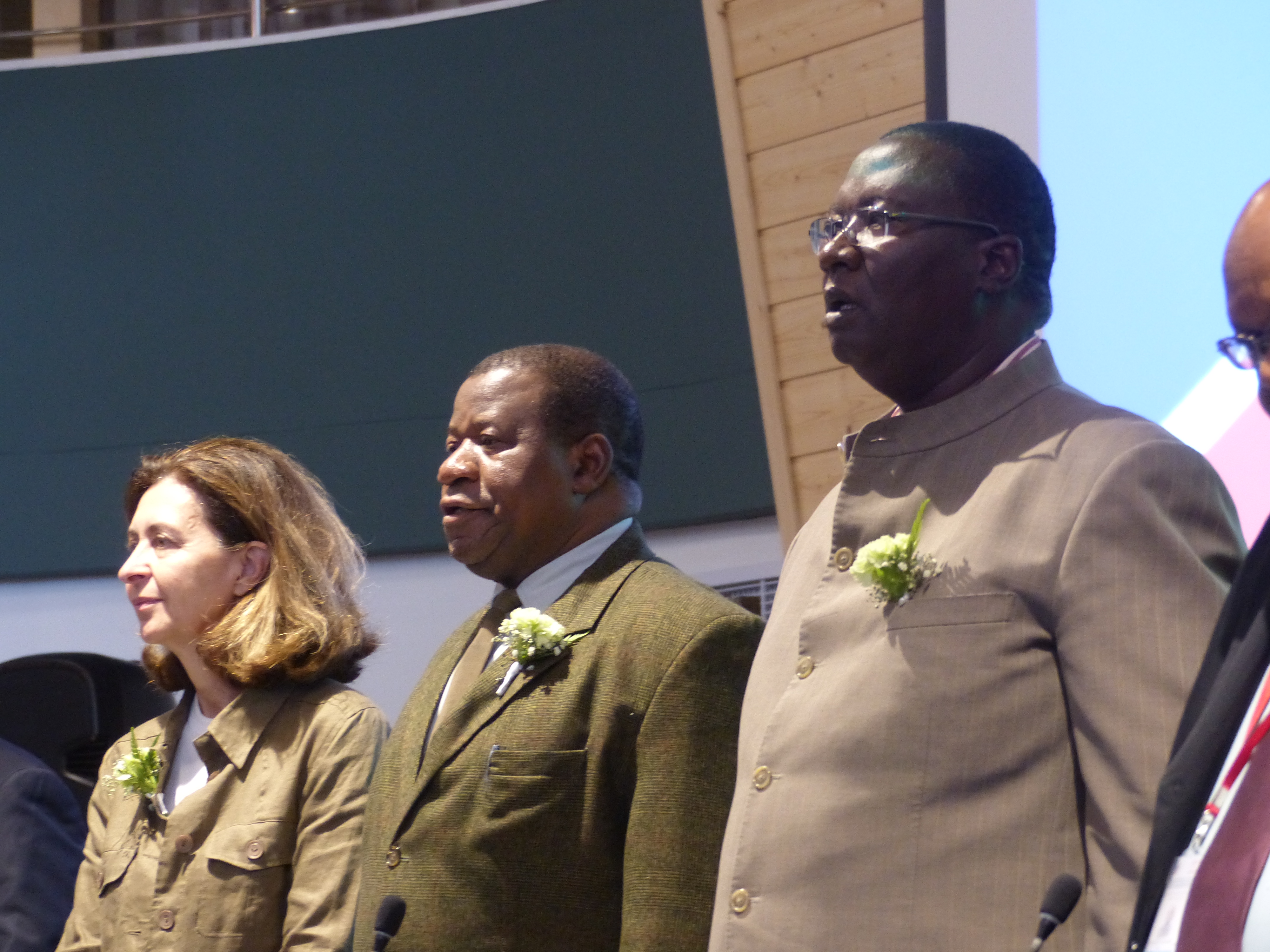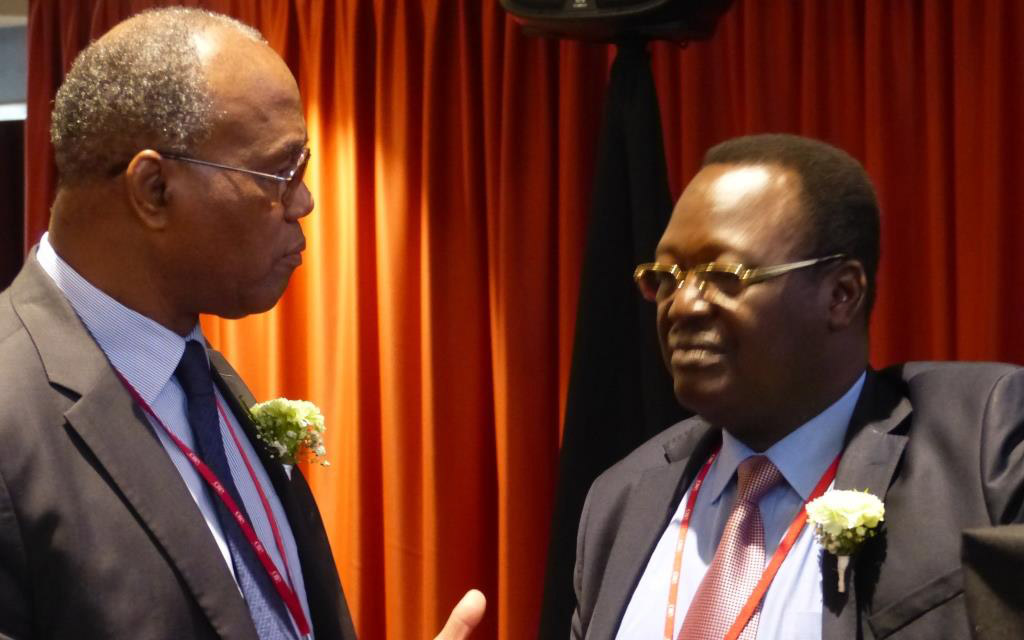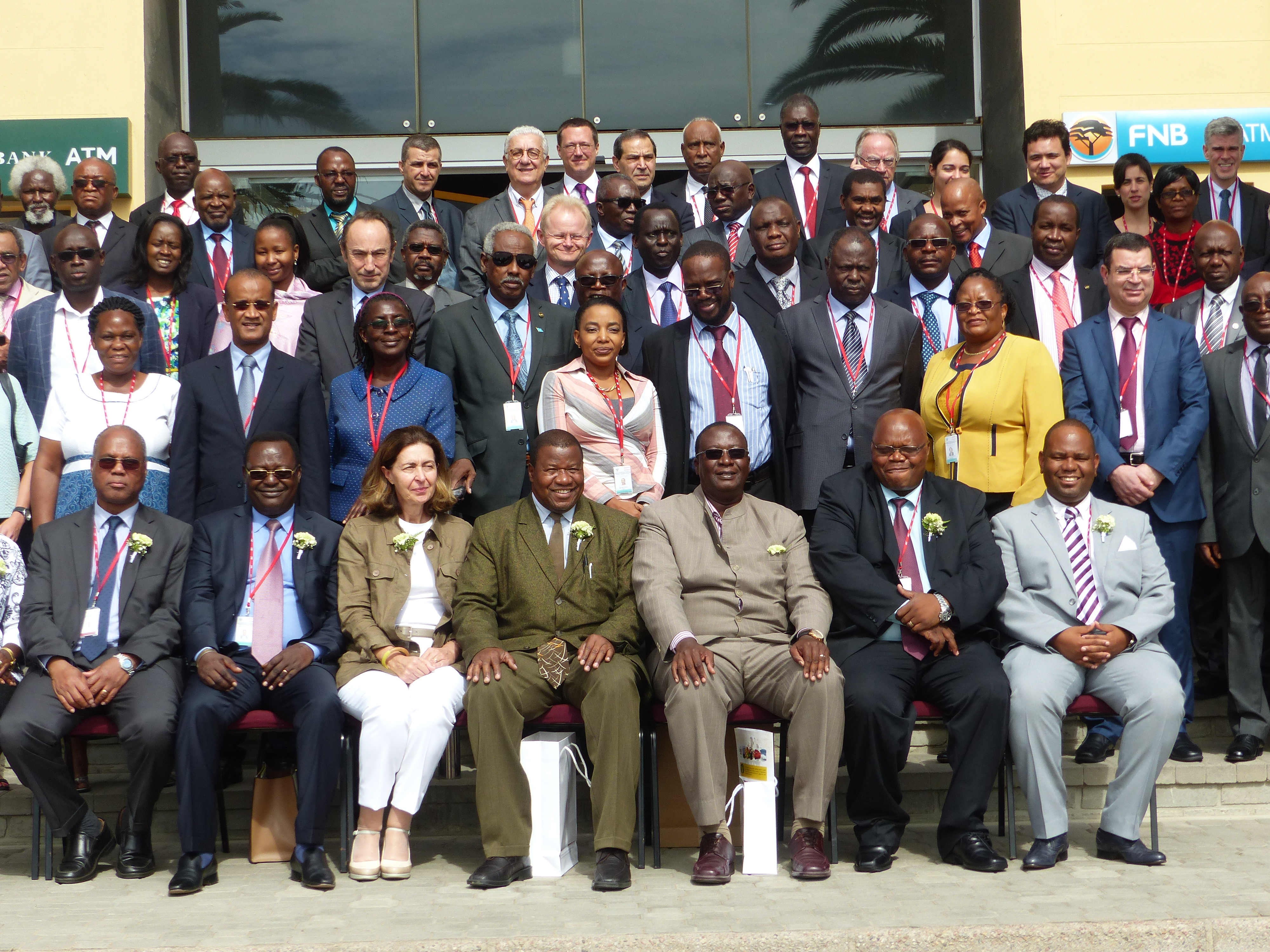
Some 26 years after the last Conference of the OIE Regional Commission was held in Windhoek, Namibia (1991), the 22nd Conference of the Regional Commission for Africa of the World Organisation for Animal Health (OIE) took place in Swakopmund, Namibia, from 20 to 24 February 2017.
The Conference, attended by some 80 participants, was chaired by Dr. Milton Maseke, OIE Delegate for Namibia, along with Dr Monique Eloit, OIE Director General, Dr. Bothle Michael Modisane, OIE Delegate of South Africa and President of the OIE (Council and World Assembly), Dr. Karim Tounkara, OIE Regional Representative for Africa, as well as Dr. Komla Daniel Batawui, OIE Delegate of Togo and President of the OIE Regional Commission for Africa.
The inaugural meeting was held in the conference hall of The Dome in Swakopmund and was attended by the Minister of Agriculture, Water and Forestry of Namibia, Hon. John Mutorwa, and the Governor of Erongo Region, Hon. Cleophas Mutjavikua, who delivered welcome addresses to the audience. The Minister, in his speech, referred to the achievements of the Republic of Namibia in terms of official OIE disease status in respect of several diseases, including mad-cow-disease, BSE, or bovine spongiform encephalopathy, for which Namibia is the only country in Africa with a negligible risk, but also pointed to the impact that the two consecutive PVS Pathway missions of 2008 and 2010 have had on e.g. the training of veterinarians or the livestock identification and traceability system that was extended to the Northern Communal Areas (NCA) in 2011, leading to a situation whereby both the north and south (separated by the Veterinary Cordon Fence, VCF) were running on the same system by 2013.
Dr. Botlhe Michael “Mike” Modisane, OIE Delegate of South Africa, President of the OIE Council and of the World Assembly of OIE Delegates, since May 2015, pointed to the high relevance of one of the main topics of the Conference, pastoralism, in dealing with veterinary services delivery and environmental stewardship in the near future. He promised that, as principal representative of the OIE Council, he would “listen attentively and engage with everyone to understand the challenge faced by the region in dealing with issues affecting veterinary services and particularly controlling animal diseases, and build on the OIE’s understanding of your expectations and what needs to be done by the OIE…”
Dr. Karim Tounkara, OIE Regional Representative for Africa, based in Bamako, Mali, also on behalf of his three Sub-Regional Representatives, delivered an opening address during which he welcomed Dr Eloit in Africa, for the first time, as OIE Director General. He also celebrated the fact that the current OIE Presidency is in the hands of an African OIE Delegate, Dr. Botlhe Michael Modisane, hoping that he would make the Region proud of its Presidency. He then went on to highlight some of the animal health challenges that Africa is facing today, starting with the Ebola crisis of 2015 and 2016, followed by other scourges such as foot-and-mouth disease (FMD), peste des petits ruminants (PPR), Rift Valley fever (RVF), anthrax, rabies and avian influenza, to name but a few.
Dr. Komla Daniel Batawui, OIE Delegate of Togo and current President of the OIE Regional Commission for Africa, underscored the supporting role that the Interafrican Bureau for Animal Resources of the African Union (AU-IBAR) plays in e.g. providing a platform to achieve a common position of African countries at the annual OIE General Session.
Dr Monique Eloit, Director-General of the OIE congratulated the host country, Namibia, and its neighbours in the Southern Africa Development Community (SADC) region, on their achievements in applying OIE standards. Seven out of fifteen countries in the SADC region have attained either country-wide or zonal freedom for one or more animal diseases and many have managed to gain access to the international markets for animal commodities.
Dr. Monique Eloit, OIE Director General
The OIE Regional Representative for Africa, Dr. Karim Tounkara (left) and the President of the OIE Regional Commission for Africa, Dr. Daniel Batawui (right).
The 21 African countries represented at the Conference were Angola, Botswana, Cameroon, Eritrea, Ghana, Kenya, Liberia, Morocco, Mozambique, Namibia, Niger, Nigeria, Senegal, Somalia, South Africa (represented by the Director of the Department of Animal Health, in addition to the OIE Delegate and President of the OIE World Assembly), Sudan, Swaziland, Togo, Tunisia, Uganda and Zimbabwe.
Moreover, several international and regional organisations, donor agencies and other observers participated in the Conference i.e. the Interafrican Bureau for Animal Resources of the African Union (AU-IBAR), the African Veterinary Association (AVA), the United Nations Food and Agriculture Organisation (FAO), the FAO / OIE Secretariat of the Global Eradication Programme (GEP) for PPR, the Meat Board of Namibia, the European Commission (DG SANTE) and the Inter-State School of Veterinary Medicine and Sciences (EISMV).
Represented at the meeting were also esteemed members of various OIE decision-making and scientific advisory bodies, such as Dr Mark Schipp, Vice-President of the OIE Council (and OIE Delegate of Australia), Dr. Gideon Bruckner (President of the OIE Scientific Commission for Animal Diseases), Dr Herbert Schneider (OIE ad-hoc group on PVS), Dr Misheck Mulumba of the ARC – Onderstepoort Veterinary Institute (and OIE Collaborating Centre) and Dr George Mathlo of the Botswana Vaccine Institute (and OIE Reference Laboratory for FMD).
The first day’s afternoon opening session was concluded by an elaborate presentation of the OIE Regional Representative for Africa, Dr. Karim Tounkara, on the proposed roll-out of the OIE Roadmap for Africa, in support of the implementation of the OIE 6th Strategic Plan (2016 – 2020).
The next day’s proceedings started with the election of the bureau of the Conference and adoption of the agenda, followed by a first technical presentation made by Dr. Lina Awada, on behalf of the OIE World Animal Health Information and Analysis Department (WAHIAD), focusing on 6 important diseases which affected African countries in the past two years, since the last Regional Conference held in Rabat, Morocco, in 2015 : foot-and-mouth disease, rabies, anthrax, peste des petits ruminants, infection with Aphanomyces invadans (epizootic ulcerative syndrome, in freshwater finfish) and -of course- the various avian influenza type A outbreaks reported across western, northern and eastern Africa. Indeed, since 2015, Africa has witnessed a dramatic spread of highly pathogenic avian influenza (HPAI), with the occurrence of three different subtypes. The two different routes of spread (animal movements and migratory birds) should be taken into account in risk analysis and countries’ preparedness. HPAI is a disease for which regional cooperation is essential, firstly because regional trade is dense and nonregulated movements have been reported as having caused HPAI events (for example, in Libya, in 2015), and secondly because disease occurrence after wild bird migration is difficult to prevent. Therefore, proper surveillance and timely reporting to the OIE are essential, to allow countries to implement a rapid and appropriate response.
Two particularly important and timely Technical Items were presented during the Conference namely:
Group photograph. Picture © P. Bastiaensen (oie) 2017.
Both technical items were followed by lively debates and interactions between the speakers, OIE Delegates, and technical experts, whether national, regional or international. Several other issues involving or affecting Member Countries of the region were also presented and debated:
In addition, for the first time, a poster session was organised, supporting some of the themes tackled by formal presentations during the plenary sessions.
Posters presented were submitted by OIE Technical Departments, OIE Regional Representations, OIE Collaborating Centres and Reference Laboratories and OIE Member Countries, and dealt with such issues as the 6th Strategic Plan of the OIE, antimicrobial resistance, avian influenza, bovine tuberculosis, foot-and-mouth disease control, official OIE disease statuses and self-declarations, pastoralism, rabies, reporting of aquatic diseases to the OIE, RVF, and many more.
The fourth day of the meeting was dedicated to field visits organised by the Namibian host, whereas the fifth and last day allowed for several international and regional technical organisations, as well as donors, to present their views and briefly outline their programmes to the Delegates of the OIE in Africa. As such, statements, followed by a panel discussion, were delivered by :
With debates being of a very high standard, recommendations adopted in Swakopmund will be presented to the next World Assembly of Delegates of the 180 OIE Member Countries for endorsement and then for implementation at regional and global level.
The Government of Namibia, well represented by the national Directorate of Veterinary Services, generously hosted the Conference, with the support of staff from the OIE Headquarters and the OIE Regional and Sub-Regional Representations for Africa, in particular the Representation of the OIE for Southern Africa, based in Gaborone, Botswana.
All pictures © P. Bastiaensen (oie) 2017, unless mentioned otherwise




